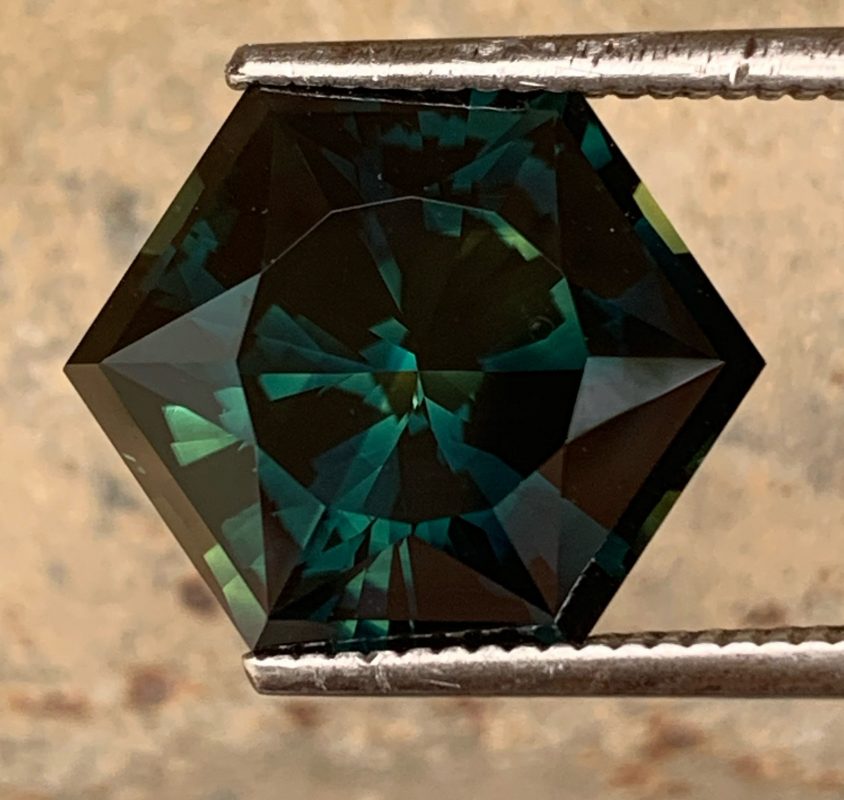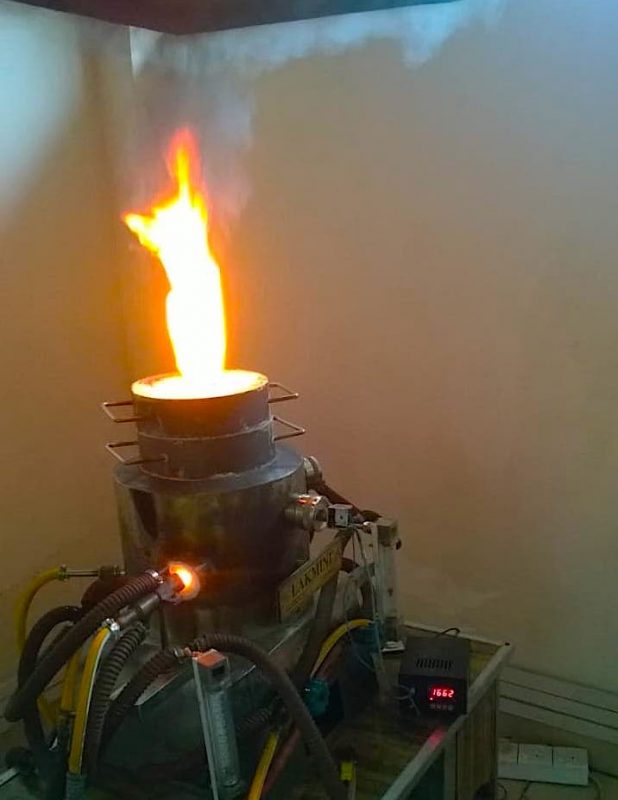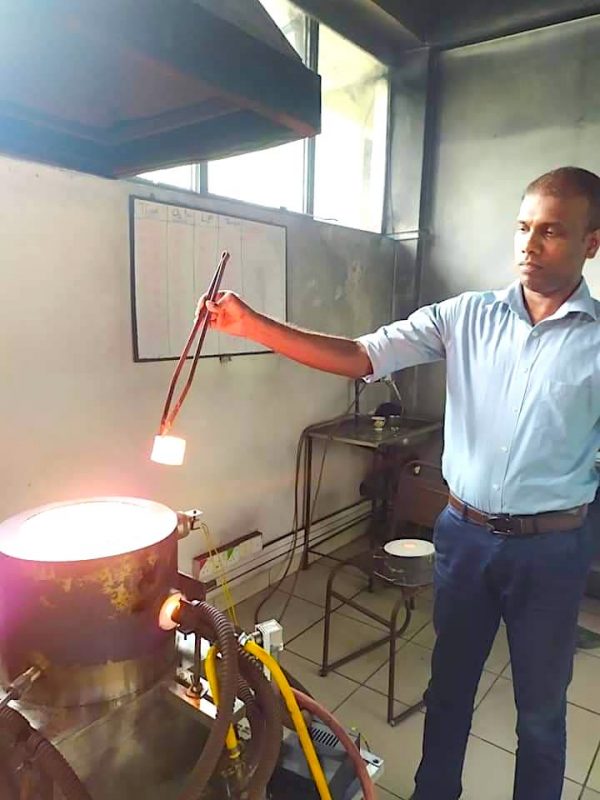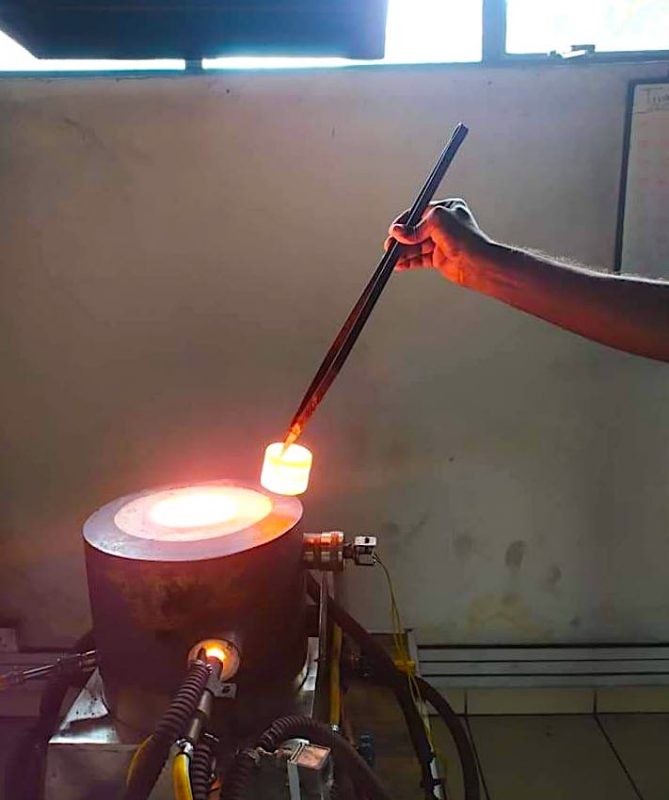Uncategorized
Heated VS Unheated Sapphires (Part II)
Let us take you a little deeper into the interesting world of sapphire heating. As the title suggests, this is a sequel to our previous blog: Heated vs Unheated Sapphires, we highly recommend you read Part I first, if you have not done so.
The earliest documented heat-treatment for a corundum–the family to which sapphires and rubies belong to–dates back to around 1045A.D in Sri Lanka. Heat-treating a sapphire helps to improve the color and clarity, making them more attractive and commercially viable. Over the years, the heating process has been refined and customized according to the origin of the sapphire and the desired outcome. Although the general process is publicly available, the specific formula for the desired outcomes is mostly kept as a secret among families and businesses to maintain their competitive edge, and have been passed on from generation to generation.
In putting this article together, we reviewed several high-quality research articles on the topic and interviewed prominent sapphire heaters we have used in Australia, United States and Sri Lanka.
How Does Heating Work?
The science behind the formation of a sapphires is critical to understanding the basis of how heating works. Sapphires are formed from a compound mix of aluminum and oxygen (Al2O3) known as corundum. This compound is found in igneous or metamorphic rock. It slowly crystalizes when the molten form of the rock cools off over time. As the crystals cool, they interact with other trace elements in its surrounding environment, and results to the diffusion of these elements into the crystal lattice. External environmental factors such as heat, and pressure accelerates the diffusion of these trace elements resulting to the color and/or inclusions seen in the sapphire. The “purest” form of a sapphire is a colorless sapphire, which has very little trace elements. Titanium is one of the most common trace elements found in sapphires that results in the blue and blue/green colors. Titanium and other elements such as iron often show up as visible lines or haze in the sapphire, making it less transparent. More often than not, nature do not always “complete” the process of incorporating these elements in the crystal lattice leading to finds of “silky” or “muddy” colored sapphire – known as gueda-type sapphire. This heralded the start of the sapphire heating industry to complete with nature’s work!
The Heating Process
There are several factors that are considered during heating:
- Presence or absence of oxygen exposure during heating
- Low or high temperature heating
- Duration of the heating process
- Beryllium or Titanium diffusion
- Addition of pressure
In general, heating formulae are derived from experimenting with several sapphires and adjusting two or more of the variables mentioned above till the optimal fit for your desired outcome is found. Often, it takes many years of constantly refining the process before a formula is perfected.
Low Temperature Slow Heating
In the world of sapphire heating, low temperatures are between 900 – 1,300C. This method is popular for basaltic dark sapphires from Australia or Antang, Nigeria. It tends to lighten the stone and minimize areas of extinction. The miners we work with in Australia sometimes heat darker sapphires for a few days to sometimes over a weak. Just like all forms of heating, the desired results are not always guaranteed, sometimes the stone could turn out to be darker. Similarly, some inclusions such as rutile could become more accentuated making the sapphire less desirable, and other times–although very rare–the stone could crack and become unusable.

There is another low temperature blow pipe method we highlighted in Part I of this blog. This is done in open flame with charcoal and a blowpipe that is used to regulate the heat. It is mainly used to improve clarity from haziness.
Pre-Heating Preparation
Before the actual heating is carried out, the sapphires are grouped according to factors such as origin, pattern of silk, size etc.
Each group is assigned a particular heating formula, after which the stones are then preformed (the shape of the cut is chosen and started). Sometimes preforms may take out the unwanted silk or haze and may not require any further heat treatment. Preforming helps to shorten heating duration, since in theory, the unwanted part that was intended to improve with heat could be eliminated during preforming.
Sapphires that have inclusions or cracks that are deemed to be at risk of expanding and cracking the stoned during heat treatment are excluded.
Heating is done with either charcoal, or a special oven where temperatures can be controlled, vacuum’s can be created, and elemental diffusion could be done.
High Temperature Heating
This is done over a few hours and it is popular with metamorphic sapphires such like the Montana sapphires to improve clarity and color. The temperatures could go as high as 1500 – 2000C and is done in a controlled furnace. Based on interviews and the scientific literature we reviewed, there is no clear evidence that Heating in the presence of oxygen or in its absence changes the results of sapphires to an appreciable degree like it does for other gemstones such as zircons.
Diffusion
This is a controversial aspect of treatment during sapphire heating. Diffusion is a process of using heat to infuse an element into a gemstone to artificially change or add to its color. Beryllium and titanium are often used in the process. Sometimes, the diffused element(s) settle round the surface of the sapphire without penetrating its core and can fade off during cutting. One of the many reasons’ diffusion remains controversial and it is not widely accepted by a vast majority. For example, beryllium diffusion could turn a colorless sapphire yellow. As a rule we DO NOT sell sapphires that have undergone any form of diffusion.
Disclosures
The American Gem Trade Association as well as other similar associations around the world, require that ALL treatments on a sapphire must be disclosed so that the customer can make an informed choice. The Part 1 of this article already covers things to look out for to ascertain signs of heat treatment. Ultimately, an accredited gemological laboratory is the gold standard to determine the treatment status of a sapphire.
Conclusion
In conclusion, among the gem quality sapphires that are produced around the world, only about 5 – 10% do not require heating. Without heat treatments there is no way the global market’s need can be satisfied. A perfect sapphire out of the ground that requires no heat treatment is the quintessential definition of the rarity of a gem. At Choice Gems, we maintain an online inventory of over 80% unheated sapphires! Nonetheless, to provide you with the highest quality of sapphires we leverage on the science of heating to improve less desirable sapphires.



